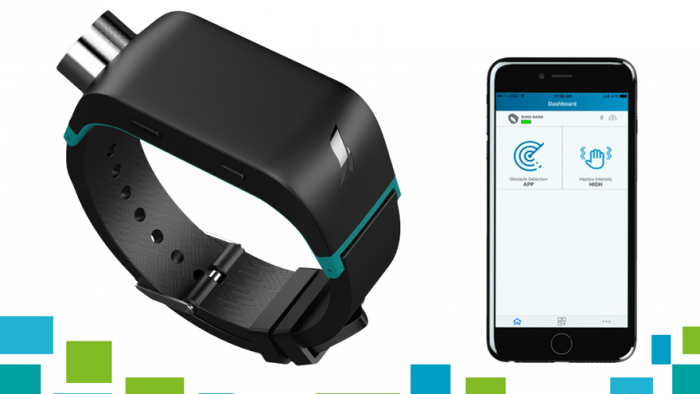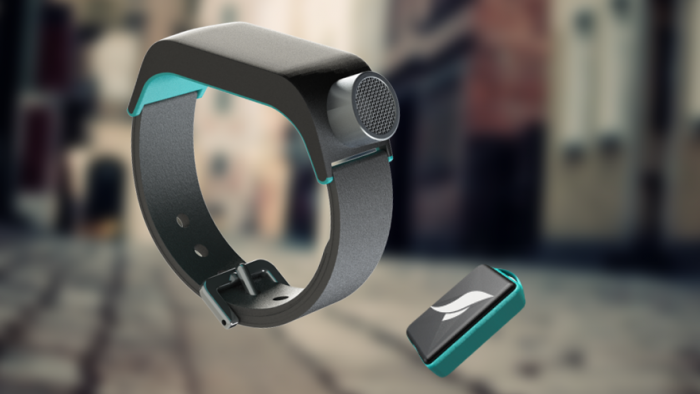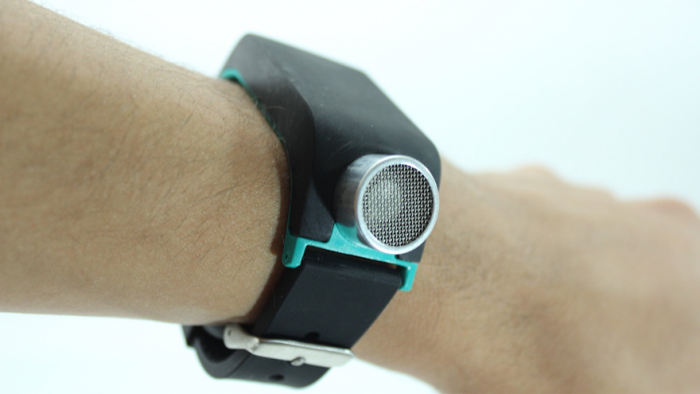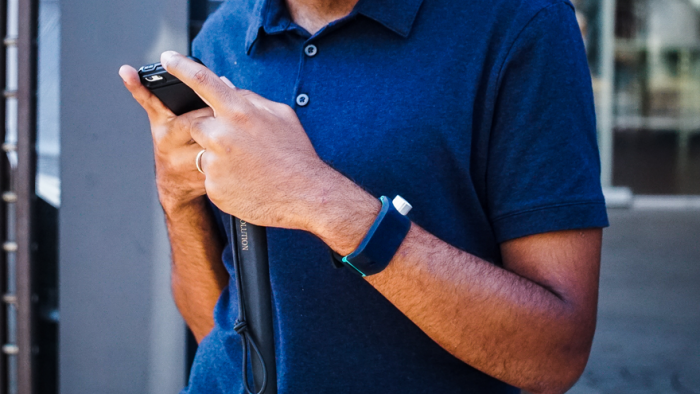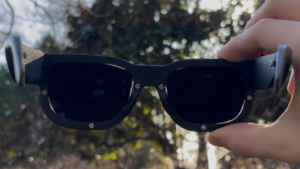A team of entrepreneurs from Mexico have just released a new cutting-edge design that helps visually impaired folks get around more easily. The Sunu wristband, a lightweight, hands-free device that uses clever sound design and tactile vibration to let the wearer create a more complete mental map of their environment as they walk.
The Sunu wristband emits inaudible sound waves that bounce off obstacles up to 14 feet in front of the wearer. A chip computer registers the feedback and signals a subtle vibration against the skin to let the wearer know of an upcoming object. The closer the obstacle is, whether it be a wall, lamp post or person, the more intense the pulse becomes. It is also sensitive to direction, using the radius of the wrist as a kind of tactile compass.
While certainly not as complex as in nature, the function of the Sunu wristband can be compared to the way some sightless animals navigate their terrain effortlessly with echolocation, by sending high-frequency sound out in front of them and moving according to the “audio image” that bounces back.
While this device represents a unique new avenue for sense-based problem solving for those with poor vision, it is not meant to replace the valuable function of guide dogs, but rather serves as an additional tool to use in tandem with a white cane. It enhances the wearer’s awareness of personal space and enables them to trail someone else more easily in a bustling city street, for example.
The Sunu wristband has an accompanying mobile app which serves as a data dashboard for the device. Its range, sensitivity to feedback as well as the tactile vibration on the skin can be adjusted.
Lead designer on the project, Fernando Albertorio, spoke to the Washington Post about the lack of confidence many blind people have about going outside the house which served as the inspiration for the Sunu project. According to him, it addresses the basic human need to be able to get around outside and be part of the public without fear.
“This is a way of getting people outside and doing things while being discreet,” he said, “Folks want to be able to go outside, be active, blend in and be part of their community.”
More on design for the visually impaired:
The fascinating way blind designer Simon Dogger is able to feel the emotions of others
Notes on Blindness: A virtual reality experience

